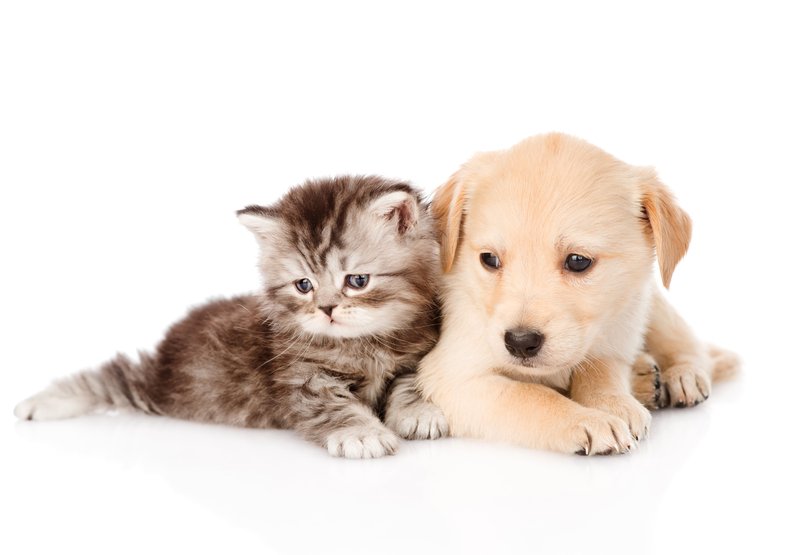
Imagine this: you’ve just adopted a playful kitten, and your dog has been an only pet for years. You might be picturing a cartoon-like battle where the dog chases the cat around the house. But hold on! There’s more to it than that. The truth is, many families successfully blend these two species. Let me explain how to navigate this process and foster a harmonious living situation for all your furry friends.
Understanding the Nature of Cats and Dogs
Cats and dogs have different instincts and behaviors, which is why we often see them portrayed as rivals. Dogs are pack animals and thrive on social interaction and hierarchy. They love companionship and often rely on their human families for guidance. On the flip side, cats are more solitary by nature. They appreciate their independence and often prefer to set their own rules.
Because of these differences, it’s essential to understand how each animal typically behaves. For instance, dogs may view cats as intriguing playmates or even prey, while cats might find dogs overwhelming or scary. When you begin introducing them, keeping this in mind can help ease the transition.
You might be wondering how these characteristics affect their ability to coexist. Here’s the thing: if you start with proper introductions and allow each pet to adjust at their own pace, you’ll set the foundation for a positive relationship.
The Importance of Proper Introductions
One of the most crucial steps in helping cats and dogs live together is the introduction process. Jumping straight into letting them meet can lead to chaos. Instead, approach this like a well-planned dinner party—slow and careful introductions can make all the difference.
Start by allowing them to get used to each other’s scents. You can do this by swapping their bedding or toys. Let the cat explore the dog’s space and vice versa, without direct contact. This helps them become familiar with the idea that there’s another pet around.
Once they’ve had some time to adjust, it’s time for a face-to-face meeting, but make it low-pressure. You might use a baby gate to create a physical barrier, allowing them to see each other without direct confrontation. This step can help them gauge each other’s reactions without feeling threatened.
Creating Safe Spaces for Each Pet
Every pet needs their own sanctuary, especially when adjusting to new companions. Think of it like providing a cozy nook where they can retreat when feeling overwhelmed. For cats, this often means high perches, like shelves or cat trees, where they can observe without being bothered. Dogs, on the other hand, often appreciate a comfy bed or crate in a quiet corner.
Here are some ideas for creating safe spaces:
- For dogs, a crate can serve as a safe retreat. It’s their personal spot where they feel secure.
- For cats, high shelves or window perches can provide a sense of safety away from potential dog chaos.
- Ensure each pet has their own food and water bowls, as sharing can lead to jealousy or territorial behavior.
By having these designated areas, both pets will feel more secure, which reduces anxiety and promotes peace in your home.
Monitoring Interactions
Once your cat and dog are introduced and starting to interact, it’s essential to monitor their behavior closely. Early interactions can be filled with excitement or curiosity, but you want to ensure that neither pet feels threatened or uncomfortable.
Watch for signs of stress in both animals. If the cat shows signs like hissing or hiding, or if the dog’s tail is tucked or overly excited, it’s time to step back. You can always separate them for a little while to let everyone cool off.
Over time, you’ll learn their body language and how to recognize when they’re comfortable with each other. Building trust and creating a friendly environment takes a bit of patience, but it’s worth it when you see them playing together or snuggling up for a nap.
Understanding Behavioral Differences
Cats and dogs communicate very differently, which can lead to misunderstandings between the two. For instance, a wagging tail in dogs often signals happiness, but in cats, a flicking tail can mean annoyance. Being aware of these subtle differences will help you intervene when necessary and prevent conflicts.
Additionally, how each species plays can be vastly different. Dogs might want to chase, while cats prefer pouncing or ambushing. Encouraging safe, species-appropriate play is key. You might engage your dog with fetch while enticing your cat with a feather toy.
Recognizing and respecting these behavioral patterns encourages a bond over time. Patience and observation are your best tools!
Tips for Long-Term Coexistence
Once your pets seem comfortable with each other, maintaining a peaceful home is all about consistency. Here are some tips to keep your home harmonious:
- Establish routines for feeding, playtime, and training. Animals thrive on predictability.
- Provide plenty of interactive toys to prevent boredom and competition for attention.
- Consider enrolling in training classes for your dog to enhance their behavior and help them understand boundaries with the cat.
It’s also essential to give equal attention to both pets. Make sure they see you interacting with each of them to prevent jealousy. A few minutes of special playtime with each can do wonders.
Common Questions and Concerns
You might have some common concerns about having a cat and dog together, and that’s entirely valid! For example, what if your dog has a high prey drive? Or your cat seems terrified? These issues may require a little more attention. Consulting with a professional trainer or behaviorist can provide tailored advice based on your specific situation.
Another worry could be whether older pets can adapt to a new addition. The answer is yes, but you’ll need a little more patience. Older pets might take longer to adjust, so allow for gradual introductions and extra reassurance.
Final Thoughts
In conclusion, yes, cats can live with dogs and other pets! It all comes down to understanding their differences, introducing them slowly, and fostering a safe and comfortable environment. With a little effort and a lot of love, you can help your pets coexist harmoniously.
Think of your home as a lively ensemble, where each pet plays their part. Patience, understanding, and respect for their individual personalities will ensure a joyful living arrangement for both creatures. You’ll find that, just like a well-balanced meal, a diverse pet household can bring you endless joy and companionship.

